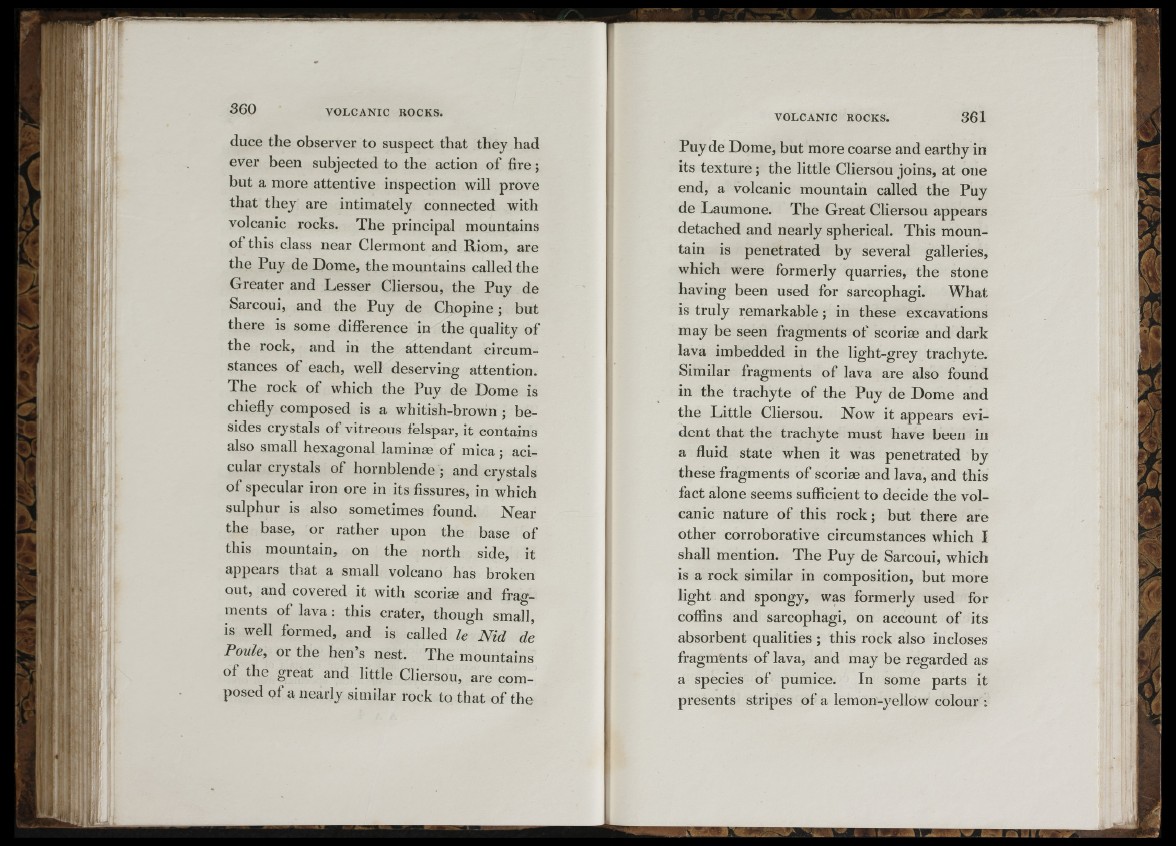
= ñ4
4 IÍ
I II! I
360 VOLCANIC ROCKS.
duce the observer to suspect that they had
ever been subjected to the action of fire ;
but a more attentive inspection will prove
that they are intimately connected with
volcanic rocks. The principal mountains
of this class near Clermont and Riom, are
the Puy de Dome, the mountains called the
Greater and Lesser Cliersou, the Puy de
Sarcoui, and the Puy de Chopine ; but
there is some difference in the quality of
the rock, and in the attendant circumstances
of each, well deserving attention.
The rock of which the Puy de Dome is
chiefly composed is a whitish-brown ; besides
crystals of vitreous felspar, it contains
also small hexagonal laminae of mica ; acicular
crystals of hornblende ; and crystals
of specular iron ore in its fissures, in which
sulphur is also sometimes found. Near
the base, or rather upon the base of
this mountain, on the north side, it
appeals that a small volcano has broken
out, and covered it with scoriæ and fragments
of lava : this crater, though smaîl,
is well formed, and is called le N id de
Poule, or the hen’s nest. The mountains
of the great and httle Cliersou, are composed
of a nearly similar rock to that o f the
VOLCANIC ROCKS. 361
Puy de Dome, but more coarse and earthy in
its texture ; the little Cliersou joins, at one
end, a volcanic mountain called the Puy
de Laumone. The Great Cliersou appears
detached and nearly spherical. This mountain
is penetrated by several galleries,
which were formerly quarries, the stone
having been used for sarcophagi. What
is truly remarkable ; in these excavations
may be seen fragments of scoriæ and dark
lava imbedded in the light-grey trachyte.
Similar fragments of lava are also found
in the trachyte of the Puy de Dome and
the Little Cliersou. Now it appears evident
that the trachyte must have been in
a fluid state when it was penetrated by
these fragments of scoriæ and lava, and this
fact alone seems sufficient to decide the volcanic
nature of this rock; but there are
other corroborative circumstances which I
shall mention. The Puy de Sarcoui, which
is a rock similar in composition, but more
light and spongy, was formerly used for
coffins and sarcophagi, on account of its
absorbent qualities ; this rock also incloses
fragments of lava, and may be regarded as
a species of pumice. In some parts it
presents stripes of a lemon-yellow colour :
üri